Angry Archivist: Is Sandpaper Archival?
The Angry Archivist: Is Sandpaper Archival?
The Angry Archivist returns with a question that I’m sure many collectors of Civil War memorabilia have been itching to know the answer to: Is sandpaper archival? I have to admit, sandpaper was not something I’d ever thought I’d run across when dealing with Civil War archives, but here we are.
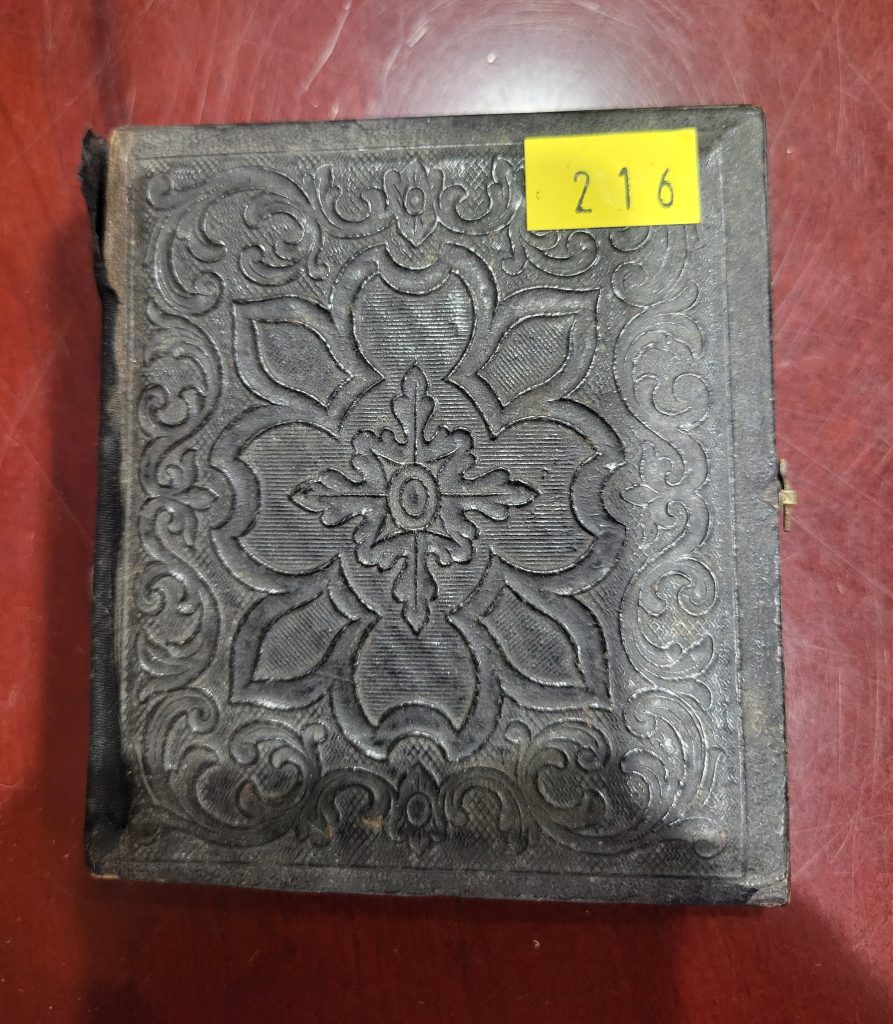
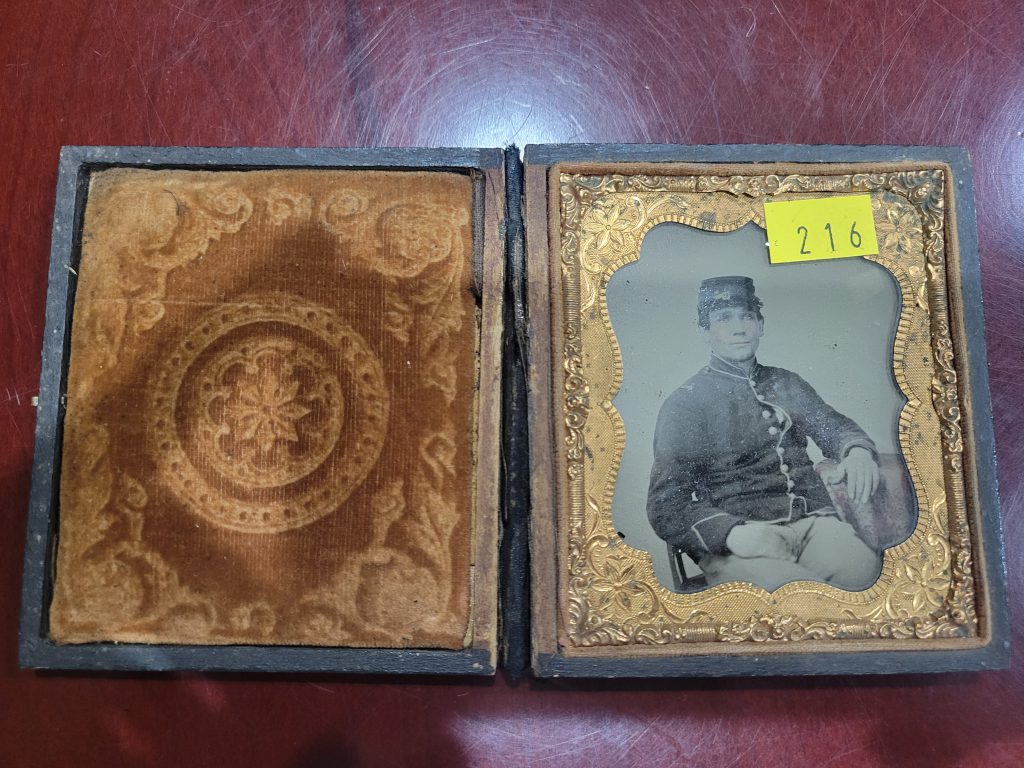
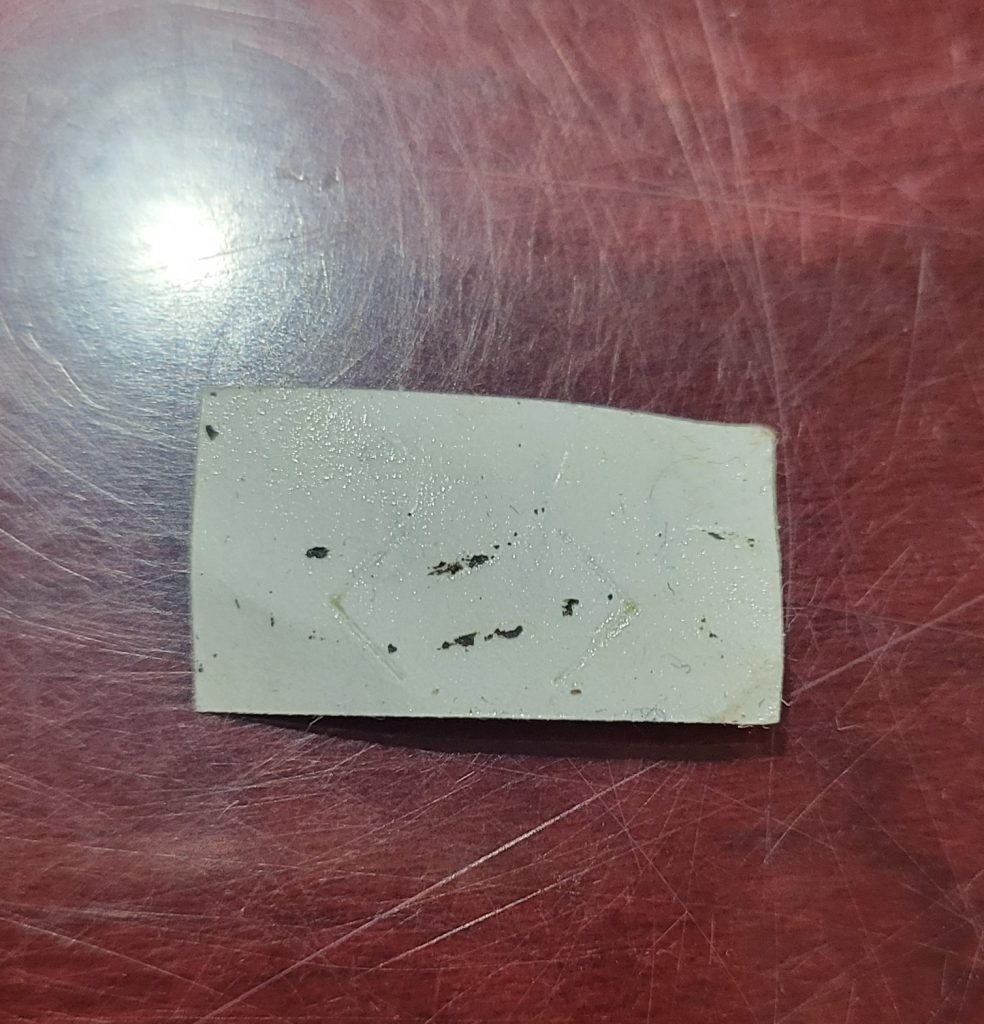
This week started out like any other. I sat down to scan a couple dozen Civil War images—tintypes, ambrotypes, CDVs—the usual. Then I spotted this image. Notice the yellow “price tag” sticker on the case. My first thought was, “ugh,” but at least I can remove this. Then I opened the case and found the ambrotype inside with another yellow sticker on it. Double ugh. By the way, whoever is putting these stickers on cases—they do cause damage. They are not harmless. The adhesive is strong enough that it can peel off layers of the case and they can also leave behind sticky goo.
As much as these stickers annoy me, they are not the reason for this particular Angry Archivist rant. No, they were just the appetizer, if you will.
Now, for those not familiar with ambrotypes, here’s a bit of a backstory. Ambrotypes are made of glass and have a black varnish on the back of the picture which makes the image a positive and allows it to be seen properly. Over time, this black coating tends to flake off—not always—but it’s not uncommon to see that happen. If the black coating is gone, the image becomes very difficult to see. Collectors will often place a piece of black paper behind the image in the frame so that it can be displayed and the photograph is visible.
Once I’d removed the yellow stickers, I began to remove the ambrotype from the case and then from its copper frame so that I could scan it at high resolution on my flatbed scanner. As I was about to remove the copper frame, I found it. And if you were going to say, “Oh, she must have found the piece of smooth black paper that the previous owner/seller placed behind the image so it could be seen better,” you would be wrong. Very wrong.
That’s right folks, I did not in fact find a piece of non-descript black construction paper, instead I found BLACK SANDPAPER. Thick black paper with a white grid pattern and a SANDPAPER TEXTURE. I like to think that I’ve seen a lot of crazy stuff in my nearly 20 years working in museums and archives, but I have to admit, this was a new one for me. A nice piece of gritty black sandpaper right against an ambrotype with its original black varnish flaking off. What could be better to put against something that is literally flaking off? Ugh.
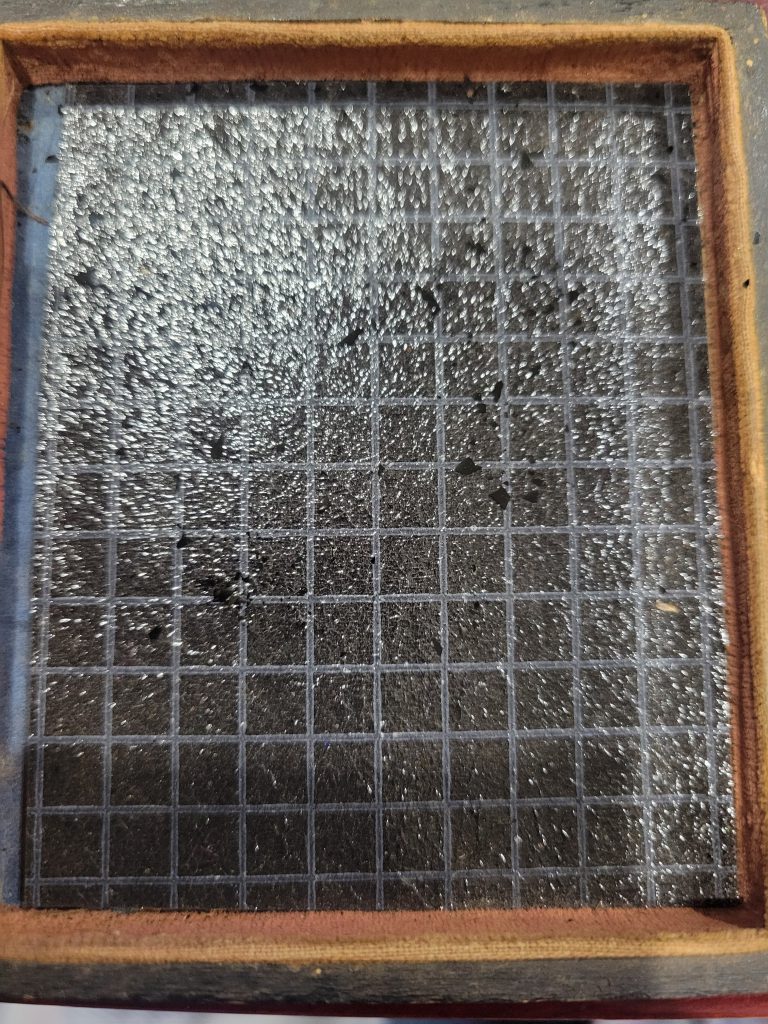
I have tried to find out what exactly this paper was. It does match some sandpaper that’s available online. It’s possible it was some other paper with a dried adhesive that is now just the texture of sandpaper. I can’t say for certain. What I can say, is that it has the texture of a medium grit sandpaper, is not sticky, and was cut to fit the frame and provide a black background for the ambrotype. Needless to say, the sandpaper was removed and discarded with prejudice.
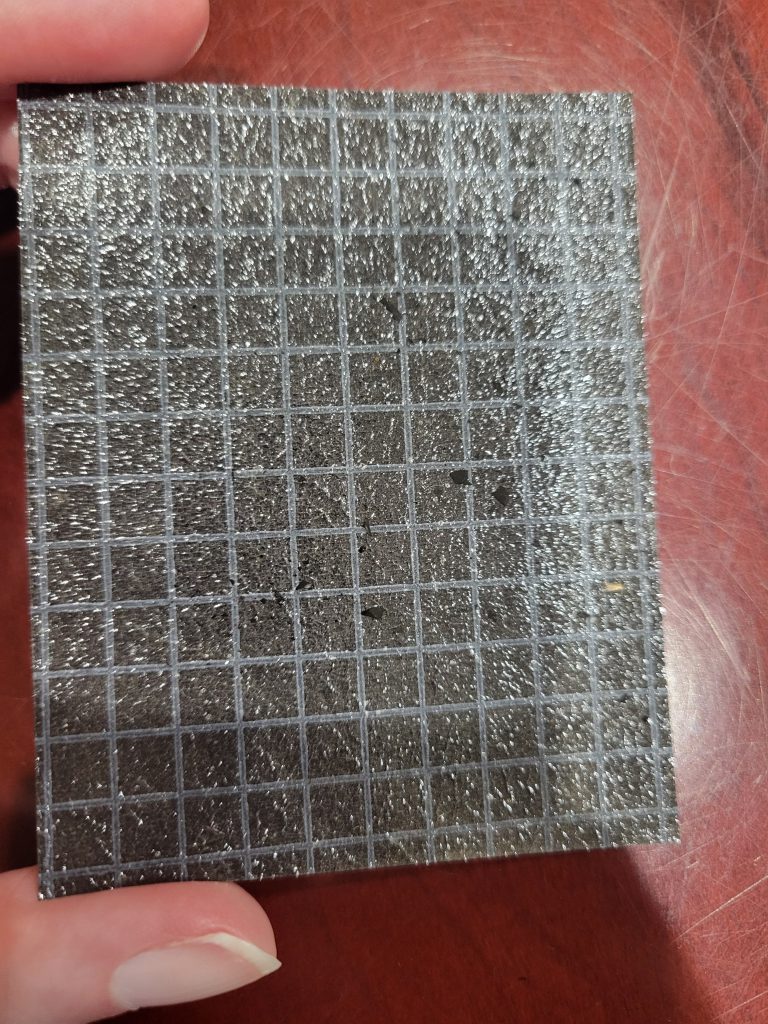
The Angry Archivist isn’t only about anger, I like to offer solutions too. My first piece of advice is that there is NEVER a situation where sandpaper is a good choice for an archive. Let’s just clear that one up right away. If you have an ambrotype that has lost some of its black varnish and wish to put something in the case with it to make it more visible, I would suggest a piece of archival black paper, like this: https://www.archivalmethods.com/product/black-gray-card-stock
The paper suggested above, and this black museum board are both archival quality and buffered. That fact that they are buffered will help neutralize the acid in ambrotypes, which makes them suitable for long term storage. Always pay attention to whether the archival materials are buffered or un-buffered, as some items can be damaged by buffered materials—such as cyanotypes, and high-protein materials like leather and silks. Buffered archival materials can actually damage those GAR reunion ribbons, and the like, so it’s an important characteristic to take note of.
If nothing else, I hope we have finally settled the question—is sandpaper archival? No. No it is not, and please for the sake of my blood pressure, do not put it behind your ambrotypes! Also, please don’t trace over original Civil War letters with ballpoint pens….

